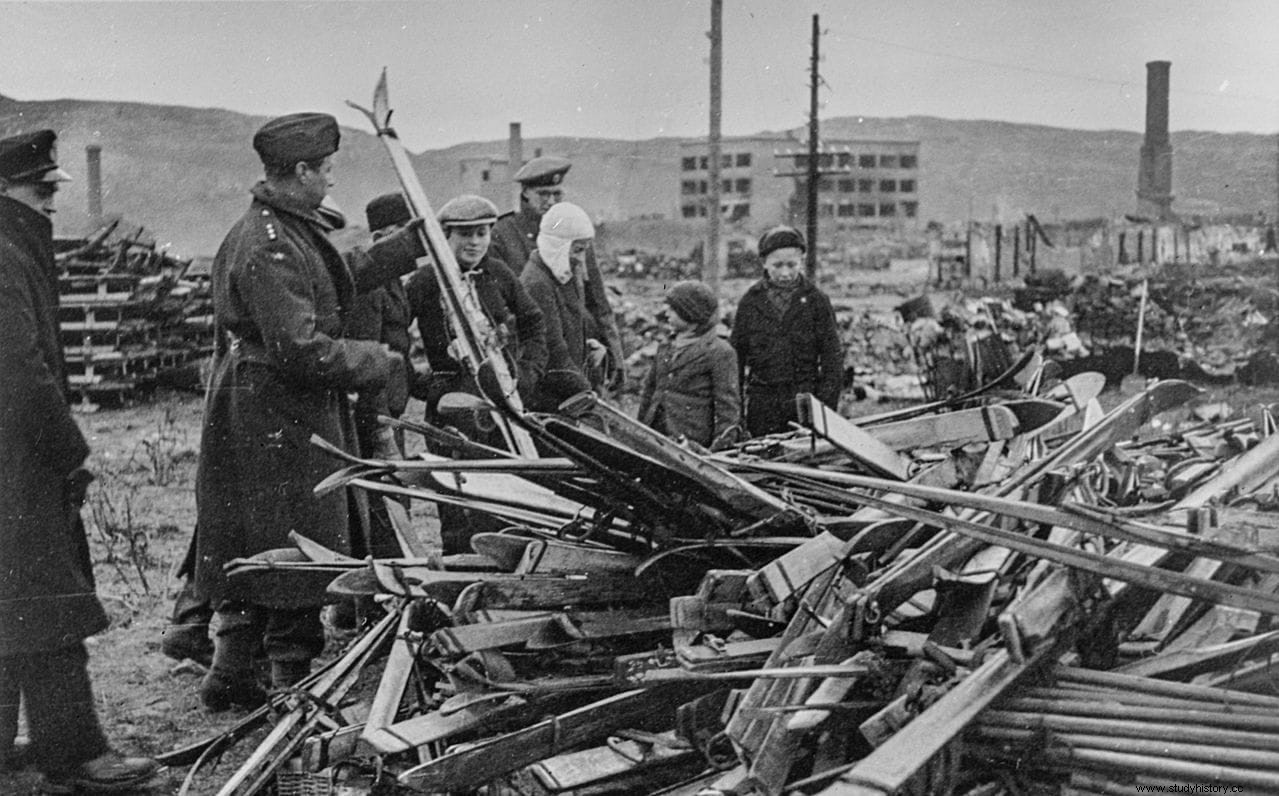The northernmost part of Norway, the one that borders Russia to the East and prevents Sweden and Finland from having access to the Arctic Ocean, is the province of Finnmark . It is currently the largest county in Norway.
Its extension is such that it is even larger than, for example, Denmark. But with a population of around 75,000, it is also the least populated region in Norway.
It has the northernmost point of the European continent , Kinnarodden, on the Nordkinn Peninsula. Further north is Knivskjellodden, on the island of Magerøya, considered the northernmost point of Europe situated on an island . And even the inhabitants of Honningsvåg claim to be the northernmost city in the world .

But there is more to the geographical singularity that is Finnmark:its capital Vardø it is the easternmost city in Norway and is further east than Istanbul itself .
And the Vardøhus fortification, which was built in 1306 by King Haakon V Magnusson is the northernmost fortress in Europe .
The most outstanding historical fact, before the Second World War in the area, happened in the 17th century, when 88 women were burned for witchcraft in the city of Vardø, a disproportionate number if we consider the small population of the area. However, the first person burned for witchcraft would not be a woman, but a man.

The area has long been the home of the Saami , better known as Lapps. However the word lapp , from which Lappish Spanish derives, is no longer currently used in Scandinavia because it is pejorative. It means uneducated, but also stupid, peripheral or beggar.
Towards the end of World War II, when the Soviets entered Finland pushing the retreating German troops, the Finns turned against the Nazis, with whom they had been allies throughout the war. The Germans had no choice but to organize a withdrawal through Finnmark, known as Operation Nordlicht .
To ensure that neither the Soviets nor the Finns would pursue them as they fled through Norway, they decided to use the scorched earth tactic. , which consists of destroying absolutely everything that could be of use to the enemy. So Finnmark was almost completely burned down:11,000 houses destroyed, 4,700 stables, 106 schools, 27 churches and 21 hospitals burned. In addition to destroying 22,000 lines of communication, roads, ships, and thousands of animals were slaughtered.

As a result of such destruction, more than 70,000 people lost their homes and more than 1,000 children were orphaned, virtually the entire population of Finnmark. 50,000 were forcibly evacuated by the Germans to the south.
Another 25,000 decided to stay and take refuge in caves, tunnels and mines. Major cities were razed to the ground.
When the war ended, the Norwegian government forbade the population to return to Finnmark, which had been plagued by mines, until the end of the summer of 1945.
